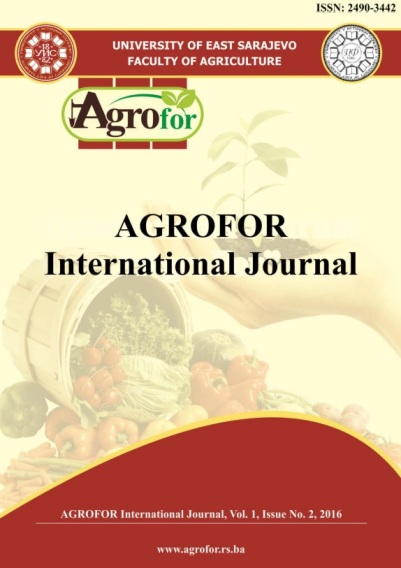LOTUS spp: BIOTECHNOLOGICAL STRATEGIES TO IMPROVE THE BIOECONOMY OF LOWLANDS IN THE SALADO RIVER BASIN (ARGENTINA)
DOI:
https://doi.org/10.7251/AGRENG1602043AAbstract
The Salado River Basin region is the most important livestock breeding area in
Argentina, wherethe Lotus species has been traditionally cultivated as forages.
Nearly 60% of their land surface is dominated by salt-affected soils with severe
constraints for crop cultivation. In order to cope with that limitation, farmers have
utilized species such as non-native L. tenuis (ex- Lotus glaber), which shows a very
good adaptation. As a result, inter-seeding of L. tenuis has been proposed as a
strategy of choice for improving forage production in marginal areas. The increase
in soil quality by these means is achieved by an increment of the organic matter
content, improvement of soil fertility as well as microbial biodiversity. Thus, the
introduction of L. tenuis and/or other Lotus genotypes could have enormous
benefits for similar constrained lands around the world. We are developing an
integrated analysis of the changes that occur in soils under legume production. We
will not only analyze the microbial diversity associated, but also soil physical and
chemical characteristics and the impact of different legume-microbes association
on mitigation of GHG emissions. In addition, we are identifying the main genetic
determinants associated with interesting agronomic traits such as plant tolerance
against biotic and abiotic stresses and the content of condensed tannins. Our future
and present research will build a solid base for the improvement of agronomicallyimportant
species and the development of better strategies for the management of
constrained lands such as the lowlands in the Argentinean Pampas.

